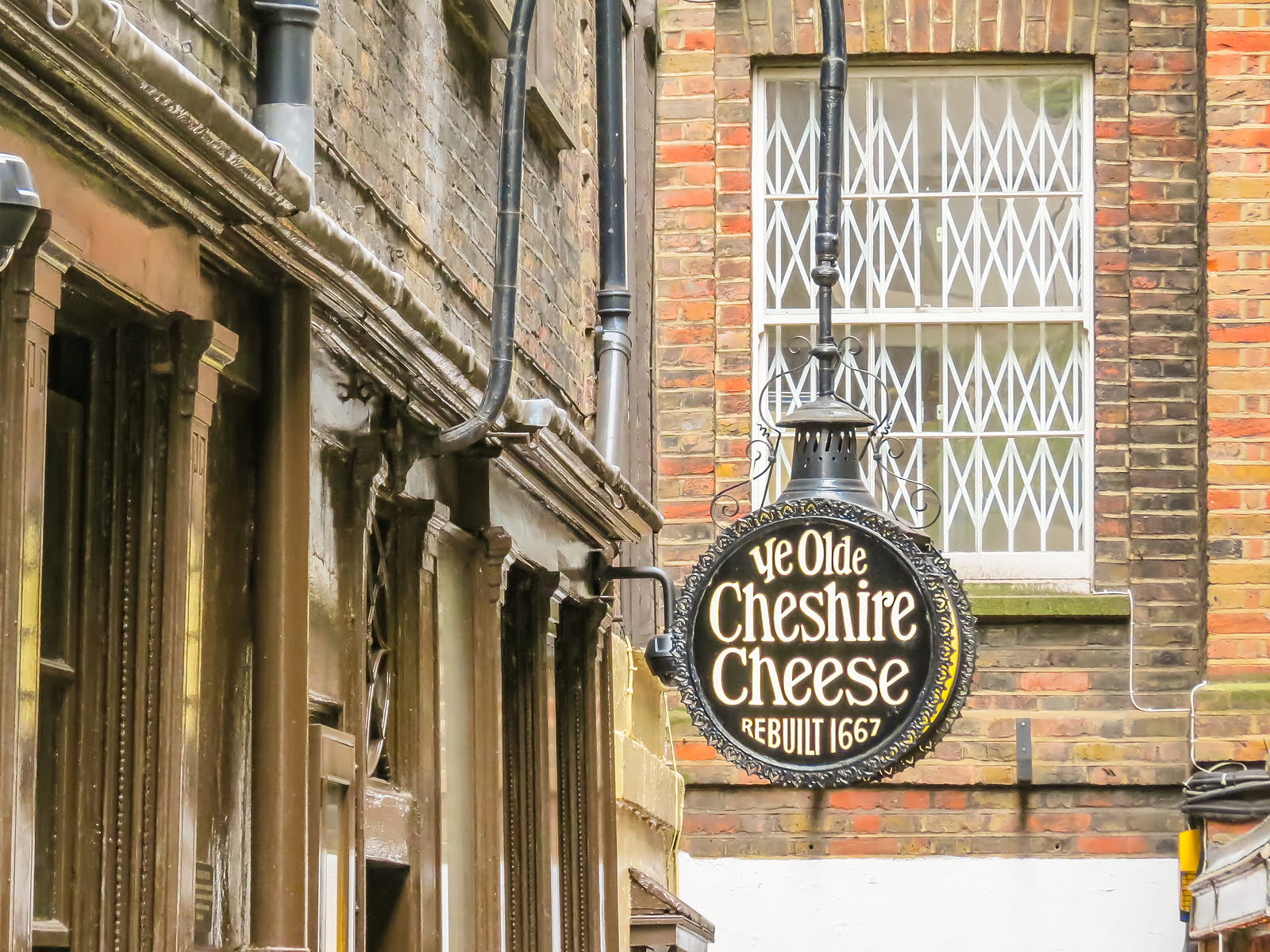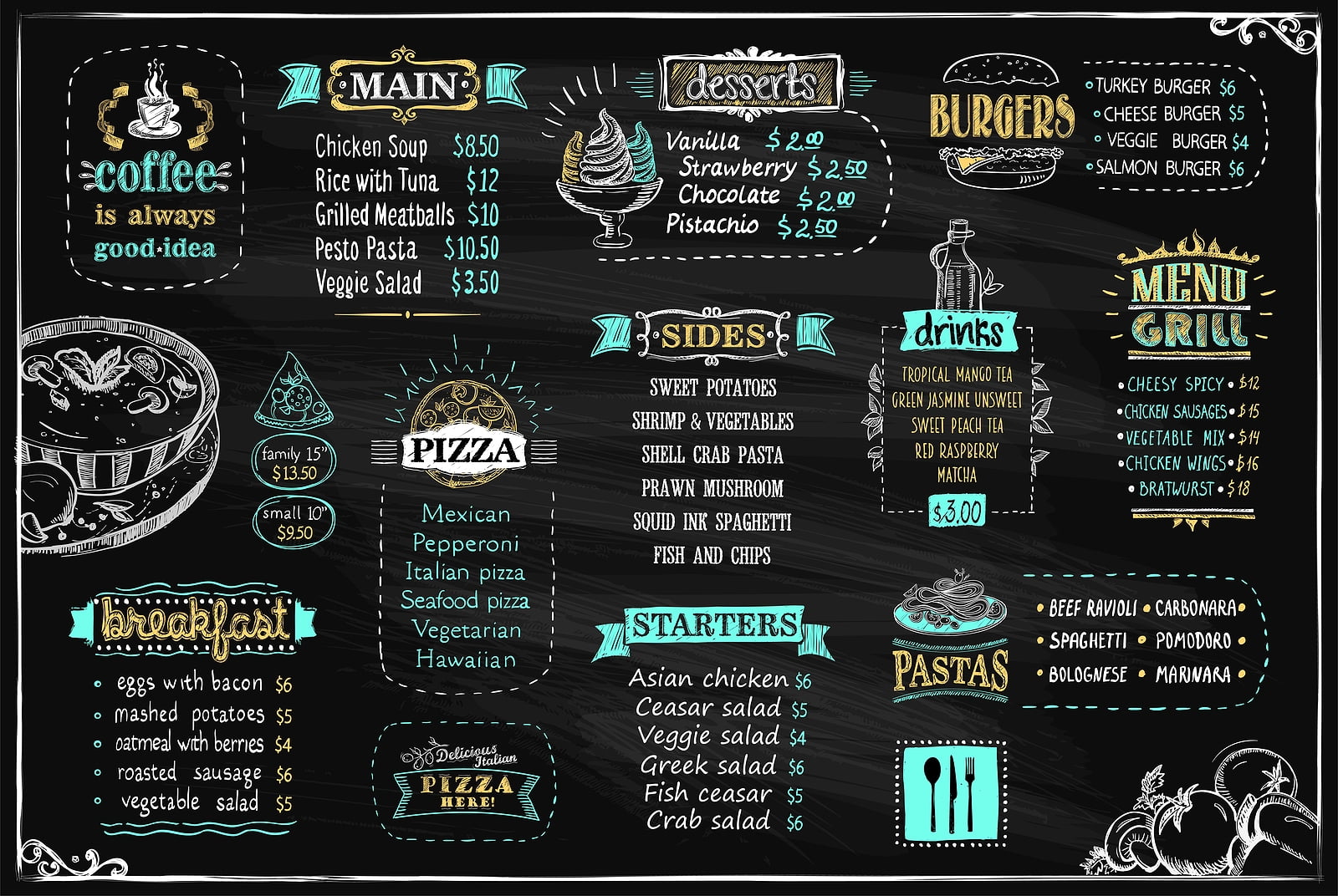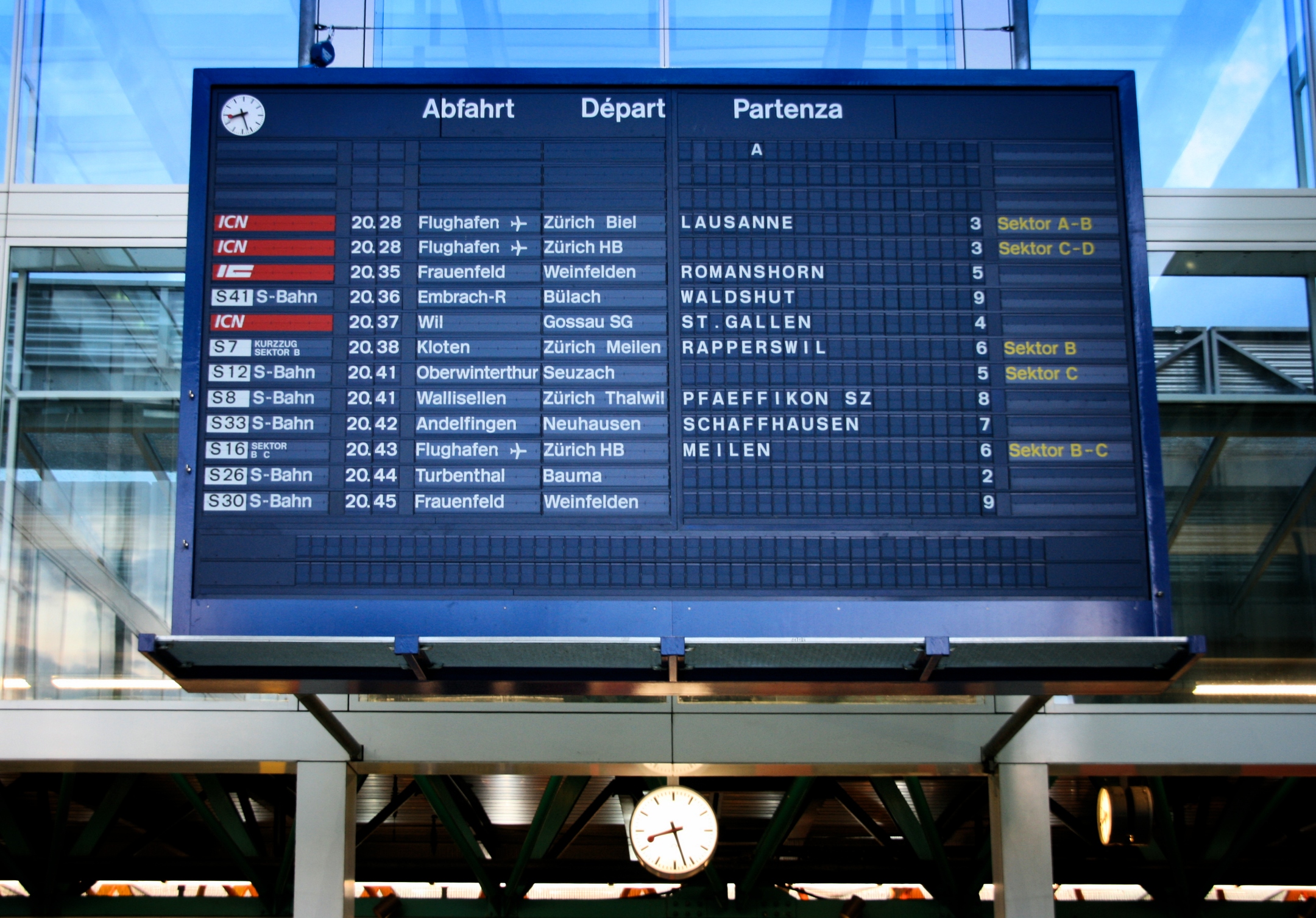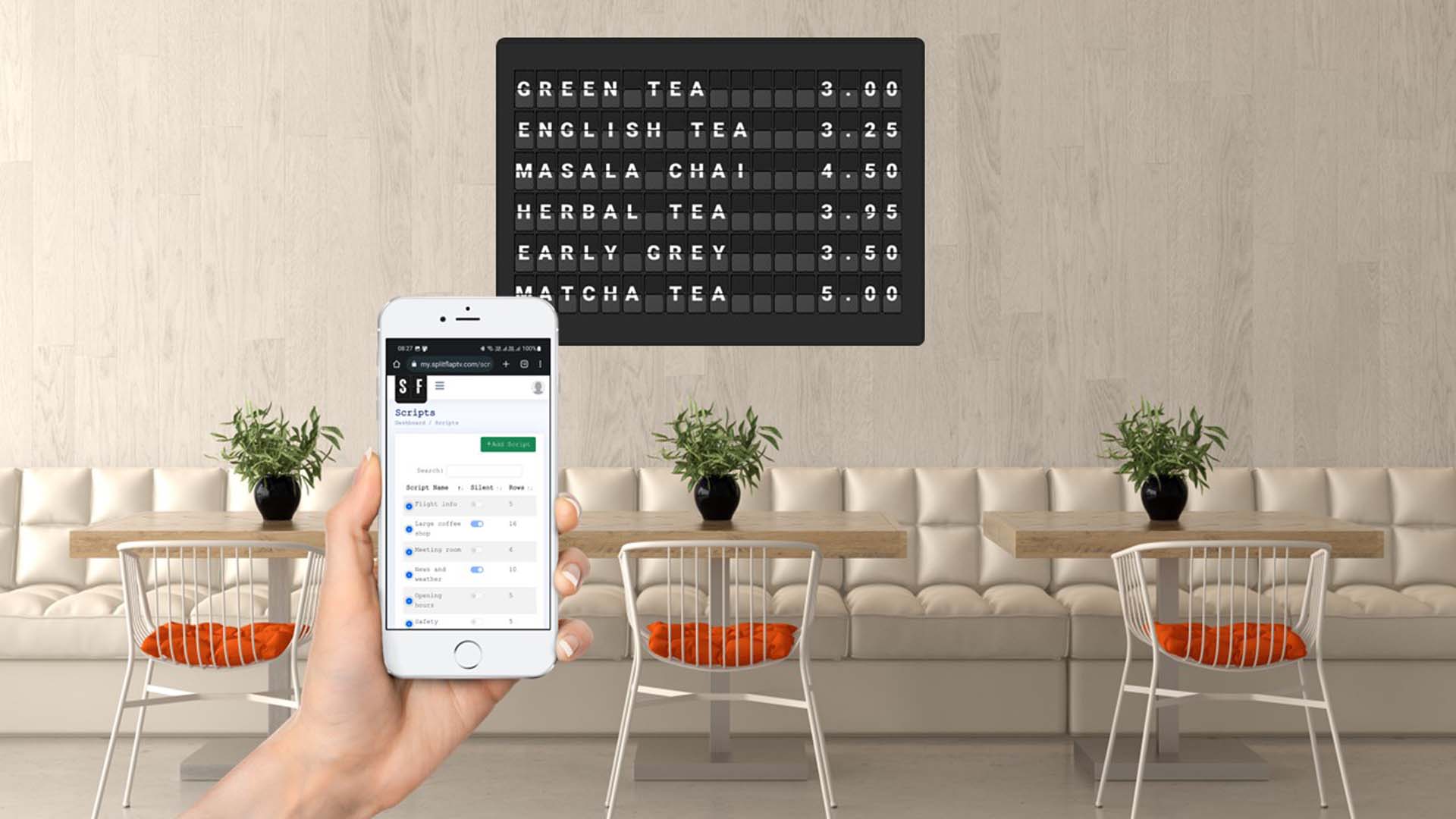Signs have been around forever since people set up the first markets and storefronts. From Ye Olde Pub to the local butcher shop, or bakery, every business had a sign. But perhaps one of the most unusual signs ever developed is the Split-Flap display board. Let’s explore the Split-Flap display board’s history and evolution.

Evolving from Static Signage to Changeable Signage
Standard static signs are great for things that don’t change often, like the name of your shop or a directional sign.
But what about things that are always changing? Like your daily specials or the time that a stagecoach or train will be arriving?
Today, we’d just put this information on a digital signage display. But before the advent of television and computers, how were these sorts of changes communicated?
One early solution to this was chalkboards. Chalkboards allowed businesses to update information easily. But it was hard on large chalkboards to write large letters legibly and someone had to stand on a ladder to change large chalkboard displays.

Birth of Split Flap Display Boards
As technology progressed, people started experimenting with electromechanical ways of displaying information. An Italian clock-making company, Solari di Udine, partnered with Italian designer Gino Valle to develop the first electromechanical moving sign to display the time in railway stations and sold its first device in 1956 to the Liege railway Station in Belgium.
The split flap clock consisted of 4 flaps with white numbers on a black background. As time moved forward, the motor turned the rotors so that gravity would flip the flap over to show the next number. It was amazing how all of these little flaps could be in sync with each other and work together to tell time!
My parents used to take me to a restaurant about 16km from our home that had a split flap clock and I and my younger brother were mesmerized watching the clock, especially when the hour would change and more flaps would flip over all at once.

Reinraum, Public domain, via Wikimedia Commons
Eventually, the company, with the help of Belgian inventor John Meyer, expanded the concept from 4 flaps to 40 flaps, allowing them to expand beyond showing time to showing letters as well.
The popularity of these split-flap display boards soon became so great that they were installed in train stations and airports across the globe. The clacking sound of the boards is familiar to multiple generations of travelers, who associate it with their favorite travel memories.

Split-Flap Display Board Evolution
While there are still some vintage split-flap display boards running today, they have been largely superseded by modern digital display signage using TV screens and computer monitors because of the cost of maintaining the electromechanical displays and the greater flexibility of modern digital signage.
There are a few companies selling new electromechanical split-flap displays, but each display costs many thousands of dollars, starting at $15,000+. This cost is understandable as there are over 10,000 moving parts.
Our company’s innovation is to bring the nostalgic charm of split-flap display boards’ history to modern TV screens.
Our Split-Flap TVs are perfect for creating a digital signage network in any business or venue—whether it’s a retail storefront, restaurant or bar, school or university campus, or even a hospital or medical office. And if you already have your own smart TV, Android-based media stick or Apple device, adding Split-Flap functionality is easy with our subscriptions!


